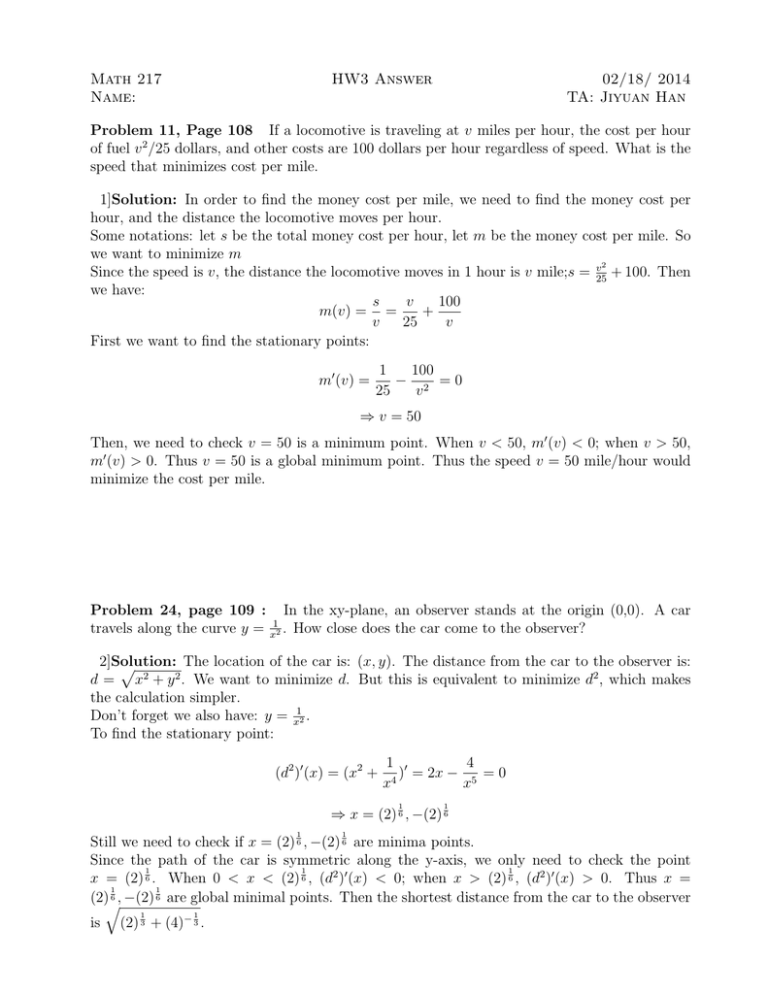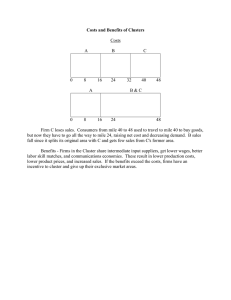partial answer to HW3
advertisement

Math 217 Name: HW3 Answer 02/18/ 2014 TA: Jiyuan Han Problem 11, Page 108 If a locomotive is traveling at v miles per hour, the cost per hour of fuel v 2 /25 dollars, and other costs are 100 dollars per hour regardless of speed. What is the speed that minimizes cost per mile. [ 1]Solution: In order to find the money cost per mile, we need to find the money cost per hour, and the distance the locomotive moves per hour. Some notations: let s be the total money cost per hour, let m be the money cost per mile. So we want to minimize m 2 Since the speed is v, the distance the locomotive moves in 1 hour is v mile;s = v25 + 100. Then we have: s v 100 m(v) = = + v 25 v First we want to find the stationary points: m0 (v) = 1 100 − 2 =0 25 v ⇒ v = 50 Then, we need to check v = 50 is a minimum point. When v < 50, m0 (v) < 0; when v > 50, m0 (v) > 0. Thus v = 50 is a global minimum point. Thus the speed v = 50 mile/hour would minimize the cost per mile. Problem 24, page 109 : In the xy-plane, an observer stands at the origin (0,0). A car travels along the curve y = x12 . How close does the car come to the observer? [ 2]Solution: The location of the car is: (x, y). The distance from the car to the observer is: p 2 2 d = x + y . We want to minimize d. But this is equivalent to minimize d2 , which makes the calculation simpler. Don’t forget we also have: y = x12 . To find the stationary point: (d2 )0 (x) = (x2 + 1 0 4 ) = 2x − =0 x4 x5 1 1 ⇒ x = (2) 6 , −(2) 6 1 1 Still we need to check if x = (2) 6 , −(2) 6 are minima points. Since the path of the car is symmetric along the y-axis, we only need to check the point 1 1 1 x = (2) 6 . When 0 < x < (2) 6 , (d2 )0 (x) < 0; when x > (2) 6 , (d2 )0 (x) > 0. Thus x = 1 1 6 , −(2) 6 are global minimal points. Then the shortest distance from the car to the observer (2)q is 1 1 (2) 3 + (4)− 3 .




